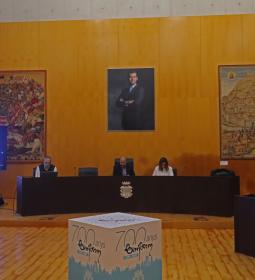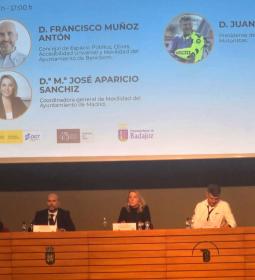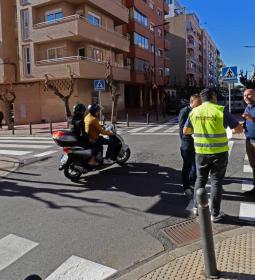The action has been carried out in a month and has involved an investment of 38,778 euros
Benidorm improves accessibility and mobility in La Cala with a new accessible bay for public transport

Benidorm City Council has improved accessibility in La Cala neighbourhood with an action consisting of the installation of a new bay for public bus transport on Langreo street, and new terminals at the junction of Mont Benidorm avenue and Asturias street. This is the ninth stop of this type that has been implemented in the city at the points with the highest influx of users and lines.
The new bay was born from the municipal intention of "improving conditions at urban public transport stops with a greater number of passengers, lines and frequency" explained Mayor Toni Pérez, who visited it today. The enclaves of the bays have been chosen after the analysis of the technicians and the contrast of the information provided by the concessionaire company.
Langreo stop has high pedestrian traffic on that section of the street. In this sense, the mayor has specified that “we verified at the time the lack of accommodation for passengers with the width of the sidewalk, the boarding and disembarking area, the lack of tactile signalling pavement for people with visual difficulties or the lack of waiting and rest spaces and, given this, we decided to act to condition and improve the stop”.
The objective of the intervention has focused on "improving security, removing barriers, facilitating access and waiting conditions for people with reduced mobility and other users". Likewise, as a consequence of the health crisis caused by the pandemic, another purpose has been "to improve public space by increasing social distance and coexistence".
The term of execution of the works has been one month and the budget allocated to this action has risen to 38,778 euros. "In short" the mayor continued, "these are interventions with which we reach every one of the city's neighbourhoods".
The action has consisted of increasing the length of the stop, avoiding blocking pedestrian traffic at the passage of lines, since it is a stop area for discretionary transport.
In addition, added Toni Pérez, "the surface has been enlarged making it more comfortable and less dangerous and the stop has been adapted for people with reduced mobility and access to any user has been improved".
On the other hand, the area of influence and access to the stop using tactile paving and direction for people with visual difficulties have also been repaving. Lastly, street furniture has been installed to make waiting more comfortable and new foundations have been placed for the installation of new canopies and pipes for various services.





